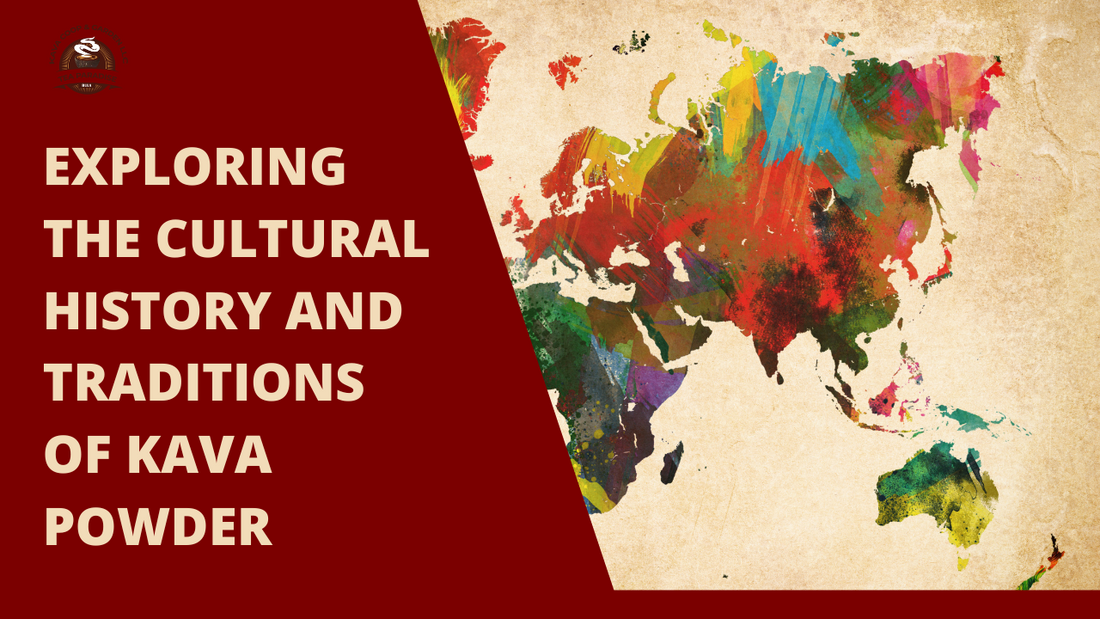Introduction:
Certain rituals occupy a special position in a world rich with varied cultures and customs, linking generations and conserving the core of a community's identity. One such amazing custom is the use of Kava, a powerful drink derived from the root of the Kava plant. This beverage has played an important role in the cultural histories of various Pacific Island nations, encouraging social bonds, spirituality, and a sense of belonging. We shall delve into the fascinating cultural history and practices around Kava powder in this blog post.
The Origins of Kava:
Kava's history dates back thousands of years to the South Pacific islands, where indigenous cultures farmed and drank it. The Kava plant, scientifically known as Piper methysticum, has enormous cultural and ceremonial relevance for Pacific nations such as Fiji, Tonga, Samoa, Vanuatu, and Hawaii. It was seen to be a divine gift, a sacred herb that connected people to their ancestors and the spiritual realm.
Rituals and Ceremonies:
Kava is much more than a beverage; it is a communal experience that improves the links between individuals and their communities. Kava ceremonies are an important part of many Pacific Island societies' social fabric. Kava preparation and sharing require intricate rituals, which are frequently conducted by a designated "tumu kava" or "kava master." This person is in charge of pounding the Kava root into a fine powder, mixing it with water, and filtering the liquid to make the finished drink.
Respect and reverence characterize these events. Participants form a circle, and Kava is poured in a communal bowl fashioned of a coconut shell. The drink is consumed in regulated amounts, with rituals and protocols guiding the process. The act of drinking Kava promotes community, encourages open discourse, and opens the door to meaningful talks.
Spiritual and Medicinal Significance:
Kava has spiritual and medicinal value in addition to its social and cultural aspects. Kava is thought to aid contact with ancestors, deities, and the spirit realm in many cultures. It is frequently used to ask guidance, wisdom, and protection during ceremonies, prayers, and rites.
Kava is also known for its calming and relaxing properties. It has long been used as a natural cure for stress, anxiety, and insomnia. Kavalactones, the active chemicals in Kava, are thought to contribute to its anxiolytic qualities. While recent studies have shed light on these impacts, it is critical to approach Kava usage with respect and awareness of its cultural context.
Challenges and Modern Adaptations:
Kava's popularity has spread beyond the Pacific Islands in recent years, reaching global markets. This extensive attention, however, has produced both opportunities and challenges. Concerns concerning sustainable production practices, quality control, and cultural integrity have arisen as a result of rising demand for kava.
Efforts are being made to solve these issues by encouraging responsible sourcing, assisting local communities, and raising awareness about the cultural significance of Kava. It is critical for aficionados to approach Kava drinking with a thorough awareness of its history and rituals.
Conclusion:
Exploring Kava powder's cultural history and traditions reveals a rich tapestry of social relationships, mysticism, and centuries-old behaviors. This ancient beverage symbolizes the spirit of Pacific Island civilizations, supporting connections and providing a glimpse into the vast tapestry of human history. Let us commemorate the traditions that have defined Kava's voyage across time and space as we taste a cup, reminding us of the beauty and diversity that bind us as a global community.

